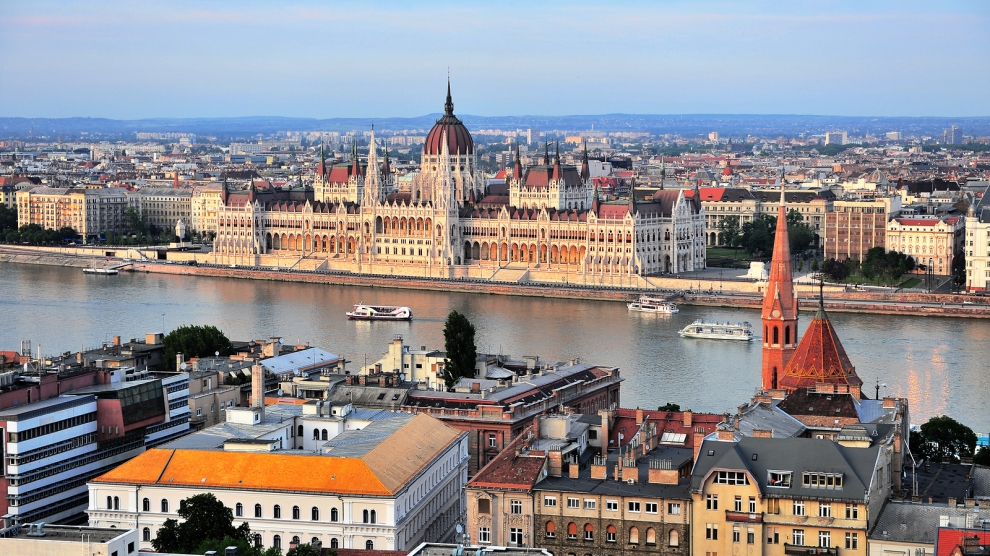Good morning, sir. This is a wake-up call to remind you that your group are meeting at 07:30 in the lobby, a receptionist at the Marriott, where I am staying, tells me as I pick up the phone in my room at 06:45.I think this is a mistake, I am here to attend a conference, I respond. No, sir, you are part of a Japanese group and you are going sightseeing after breakfast. She makes sure I understand what I have come to Budapest for. Thanks for the wake-up call, I respond, realising that she clearly knows better.
I am supposed to chair a panel discussion about innovation in the energy sector in the next couple of hours but I can’t help thinking: What if I were a Japanese tourist visiting Budapest?
Ohayōgozaimasu, the guide says to welcome us quite formally as we start flocking the Marriott lobby. Each of us is holding a camera to make sure we have great quality photos documenting our visit to Hungary’s capital. The air in Budapest is moderately polluted but quite a few of us are wearing white surgical face masks. We are all quite punctual – the receptionist did her job well – so within five minutes we are following the colourful umbrella our guide is holding high.
We are on our way to the Buda Castle, or the Royal Palace — which I normally see from my hotel window — where, in 1867, Emperor Franz Josef was crowned king of Hungary. It is less than 1.5 kilometres away from the hotel but with the morning traffic it takes us about 20 minutes. When we arrive we see there are some other tourists, so we queue up politely to see the interiors.
We admire the National Library and the World War II bullet holes on its facade. We marvel at the Hungarian artists at the Hungarian National Gallery. The wood altars from the 15th century make a huge impression on us. We even have a chance to glimpse a piece of Tate Britain thanks to a temporary exhibition displaying almost 90 paintings by some of the leading artists of the London School – Bacon, Freud, Auerbach and Kossoff.
Before visiting the Mátyás Church, we stop in a courtyard with a large fountain and a statue of King Mátyás. It is a hunting scene with animals and Szép Ilonka (beautiful Elena). Legends, the guide tells us, say that Ilonka was in the forest when she met the king, who was wearing peasant clothes so she didn’t recognise him. She fell in love with him. When she realised he was the king and that their love was impossible, her heart broke and she died.
Fast forward a few hours, we are still on the Castle Hill. We need time to shop for souvenirs at the market between the church and the castle selling Hungarian handicrafts, and — this is a must — take a group photo with the castle in the background.
Next we head for a boat on the Danube. Fortunately, it’s a sunny December day with the temperature of about five degrees centigrade, about ten degrees more than a week ago. Some of us are brave enough to stand on the deck before lunch is served as we pass by Budapest’s most famous building — Országház, which translates as the House of the Nation, or simply, the Hungarian Parliament. Completed in 1904 it boasts a Gothic revival-style façade and a neo-renaissance dome.
Our lunch is served: hortobágyi palacsinta (pancakes stuffed with meat); gulyásleves (goulash soup) csirkepaprikás (chicken) and túrós rétes (cottage cheese strudels) for dessert, all based on meat and dairy (something I have excluded from my diet). All that makes me feel dizzy.
Fortunately, the phone in my hotel room rings again and I wake up. I pick up it up but hear nothing. It seems someone just wanted me to stop day-dreaming and remember that I have a panel discussion to get to. I go downstairs for breakfast and I don’t see a single Japanese tourist: the day before there were plenty. Perhaps I shouldn’t have been so resistant and assertive when the receptionist woke me up this morning?






[…] Postcard from Budapest Emerging Europe […]